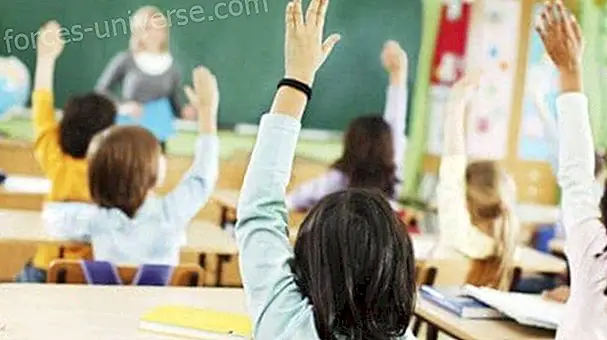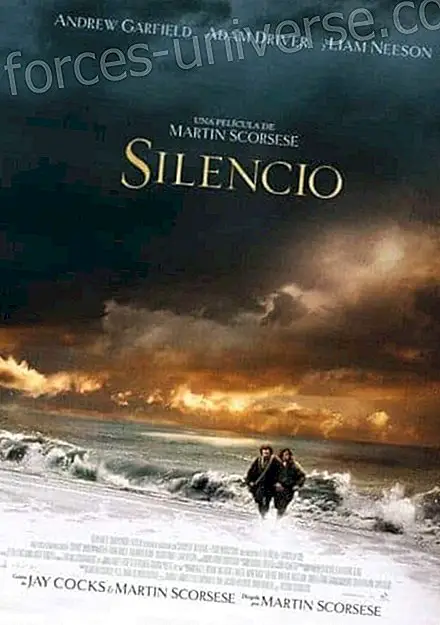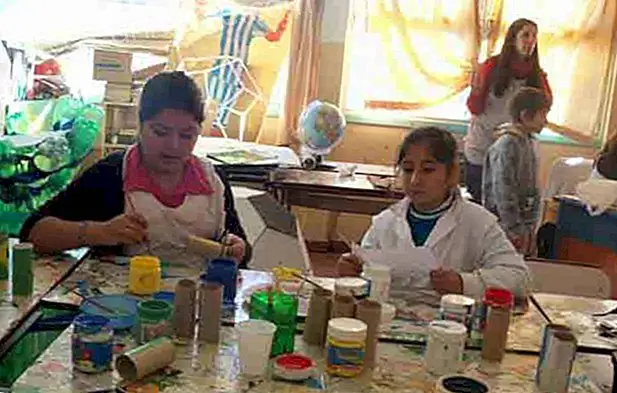
Some people argue that until an eurythmy act is present, it is difficult to understand its essence and know exactly what it is. If analyzed from the etymological plane, the word is composed of the Greek prefix eu, which adds the concepts beautiful, good and true and rhythmia which means rhythm. Other common definitions are move in a beautiful and harmonious way ; Possibility to interrelate with the essential laws of rhythm as soon as these are discovered and live in the movement itself and the word or the music made visible through the body become a resonant instrument .
The eurythmy, as art of the movement, was created in 1912 by the Austrian anthropologist and philosopher Rudolf Steiner who introduced it to the first Waldorf school he founded in 1919 in Stuttgart, Germany.
Within the activity, is the curative euritmia that works in strengthening and recovering the health of the individual; artistic euritmia whose main objective is artistic expression and pedagogical euritmia, which focuses on educating body organization, establishing mastery over laterality, gross and fine motor coordination, rhythm and postures. It also includes music, stories, poems, fairy tales, legends and literature in general.
With the purpose of publicizing and disseminating pedagogical euritmia, an introductory workshop aimed at all those people who are interested in knowing that art, understanding what its bases and knowing how they are applied in the school context begins tomorrow at the Waldorf Artabán School .
The conference cycle is divided into two blocks: the first begins tomorrow and ends on April 5 and focuses on early childhood education and the first three years of elementary school while the second module starts on April 26 and ends on April 24. May and deepen in the 4th, 5th and 6th class and in high school. The workshops will be held on Tuesdays from 5:00 p.m. and will last approximately one hour.
“My goal is that in this way the adult can extract simple exercises that he can apply in his day to day to improve his well-being, ” says Natividad Moreno, professor of Euritmia who collaborates in the Waldorf Artabán School.
The interview that Positive News held with Moreno is detailed below:
Positive News: Euritmia is known as the movement in a beautiful and harmonious way, what can you add about this concept?
Natividad Moreno: Euritmia proposes a movement full of meaning that makes visible the beauty and harmony that exists both in the macro and in the microcosm. By practicing euritmia, the entire human body becomes a fluid instrument that speaks, sings and makes visible what is sometimes only intuited. In pedagogical eurythmy, the body movement takes root in the inner experience, while looking for objective laws of expression throughout the body, which is the main instrument with which we work in eurythmy.
N +: Is it usually accompanied by music or songs?
NM: In the beginning, euritmia is used as an artistic instrument to express what lives in a poetry, a text or a musical work. In this sense, eurythmy is twinned with dance and theater. Within the Euritmic pedagogical objectives is, for example, a work with space and the body itself that includes the dynamic understanding of geometry and in this context, instrumental music accompanies the various Euritmic exercises. Generally, it is through live music, which really constitutes a gift for all participants.
N +: What is the main objective of pedagogical eurythmy?
NM: Current education tends to give great weight to “what” children learn and to look for a form of objective evaluation and leaves in the background the question of “how” children really learn. The Waldorf pedagogy seeks to accompany the child in its development, always asking what is the ideal time to bring a specific content closer to a being, which comes, without a doubt, with its own impulse but that has to find its place within the society and the cultural era that he has lived. Pedagogical eurythmy is an extraordinary tool in this challenge, which has been accompanying children and young people from many countries around the world for almost a century.
N +: Why is it so important in accompanying the growth of children?
NMR: I have been doing euritmia with young children for more than 20 years and the truth is that I wonder if I do euritmia with them or they with me. The eurythmic movements are so natural for young children, they enjoy so much expressing the basic elements of the stories and the stories we work on, that for me it is a gift to be with them. It seems that in each class they tell me: “Welcome to our world. It’s good that euritmia exists. ” In primary school, I would dare to say that this art has an ennobling and balancing function in the social sphere. In eurythmy, group work has a special meaning, allowing the being to be present as an individual while enabling community work.
N +: How is euritmia introduced within the Waldorf pedagogy? And in an adult?
NM: In the kindergarten children usually have about 20 minutes of eurythmy once a week. Then in primary and secondary school they have one or two weekly classes and in high school, eurythmy is an optional subject. Euritmia is an art that can be applied in the artistic, pedagogical, therapeutic and social art fields also within the various organizations. Adults can practice euritmia in a variety of contexts, including individual exercises for people who work all day sitting in front of a computer screen.
In Spain, adults usually encounter Euritmia for the first time when their children or grandchildren go to a Waldorf kindergarten. Young children often do almost home alone almost the entire class they have exercised in eurythmy and parents begin to be interested in this art through their children. But sometimes the roads are the other way around and that brings me great joy. I have students who learn at a Waldorf school because their parents participated in some course of artistic eurythmy. I trust that the more united parents and teachers are in a common educational project, the more we can help the new generations.
CONTACT INFORMATION:
http://www.escuelaartaban.es/
Address: C / CuatroMatejas, 18 (Galapagar), next to the House of Culture, in Torrelodones.
Tel .: 91 842 33 88
Photograph: Courtesy of the Waldorf Artabán School
( Article originally published on March 7, 2011 )






